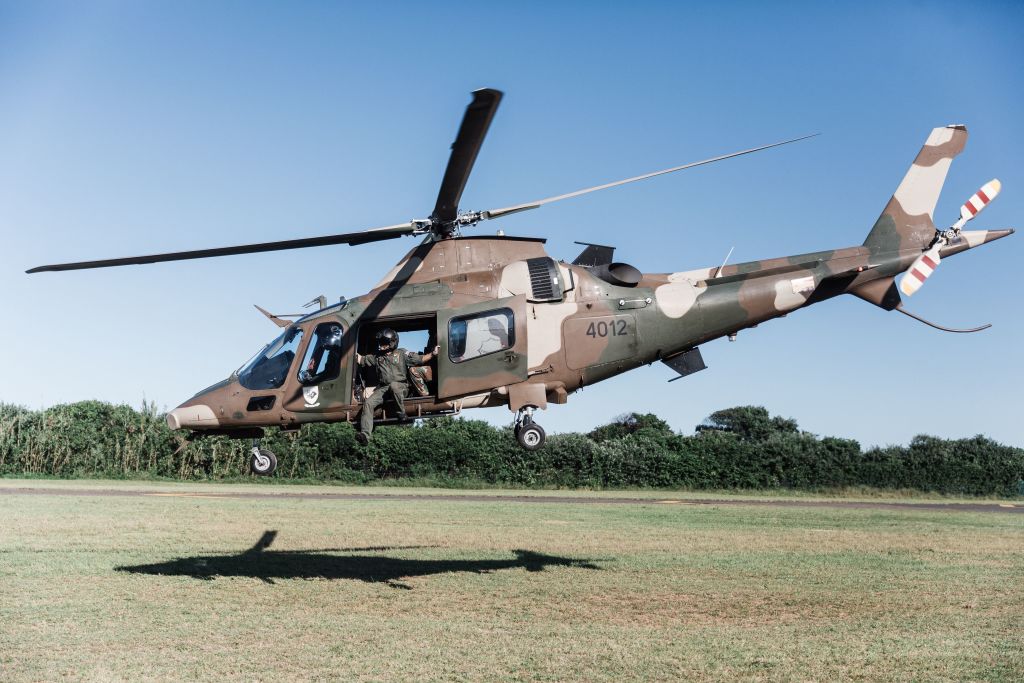ADF STAFF
On a recent oversight visit to South Africa’s Eastern Cape province, the Joint Standing Committee on Defence (JSCD) saw an ill-equipped defense force.
JSCD member Kobus Marais told National Assembly parliamentarians on May 25 that the South African National Defence Force (SANDF) is in “intensive care.”
Only two of 11 Rooivalk combat support helicopters were airworthy, he said. Only one of the four Super Lynx specialist helicopters was available. Just one of six C-130BZ Hercules medium transport aircraft could be used.
“We cannot provide logistic support to our Soldiers in the Democratic Republic of Congo and Mozambique with a lone C-130,” he reported. “The consequence is we have to charter aircraft at hundreds of millions a year, spending enough to buy C-130s.”
Earlier in May, Marais felt it necessary to assure Chief of Staff Gen. Michael Mantswana that the JSCD’s criticism wasn’t personal.
“He can see that our passion is with the defense force, and we want a defense-ready defense force, with all the prime equipment we require,” he said during a JSCD meeting. “This is a reflection of how strong we feel about the defense force and the future of that, we want to see.”
The future of SANDF is the subject of great debate.
Experts such as Jakkie Cilliers, founder of the Pretoria-based Institute for Security Studies (ISS), believe SANDF must reform itself to meet new regional security challenges of the 21st century.
“The bridge between the SANDF’s politics, mandate and structure seems particularly dysfunctional,” he co-wrote in a June 7 ISS article with Abel Esterhuyse, head of the Department of Strategic Studies at Stellenbosch University.
“There is no alignment between the size of the defense budget, the structure and nature of the SANDF, and the kind of operations it should prepare for.”
Cilliers and Esterhuyse acknowledged SANDF’s lack of funding and said Defence and Military Veterans Minister Thandi Modise “inherited a mess from her predecessor [who] served for nine hapless years, during which time the department’s budget, capacities and efficacy steadily declined.”
In announcing what she termed a “rescue the SANDF” defense budget on May 23 in Cape Town, Modise admitted that the Department of Defence is revising the force’s strategy, trajectory and ambitions.
The new budget of approximately $2.8 billion represents a reduction of nearly $27.5 million from the previous year. About 64% of the total defense budget is for personnel compensation, which Modise said will make SANDF underfunded by about $143 million this year.
“The ravages of underfunding and unserviceable capabilities against escalating tasks [have] had a devastating effect,” she said.
Helmoed Heitman, another seasoned defense analyst, said there is a disconnect between South Africa’s National Treasury (NT) expenditures and SANDF’s mission.
“The insistence it be cut back to match other departments simply doesn’t grasp that [SANDF] is different,” he told defenceWeb in May. “NT clearly has no idea at all of personnel numbers the force needs to meet its various commitments.”
The only way the SANDF could cut personnel costs, he said, would be to cut some posts and terminate external deployments or border patrols. In other words, alter SANDF’s assigned tasks.
“My bottom line remains the same as always,” Heitman said. “The cabinet must decide what role South Africa should play in the region and/or on the continent, what level of security risk the country should accept, and fund the SANDF accordingly.”

